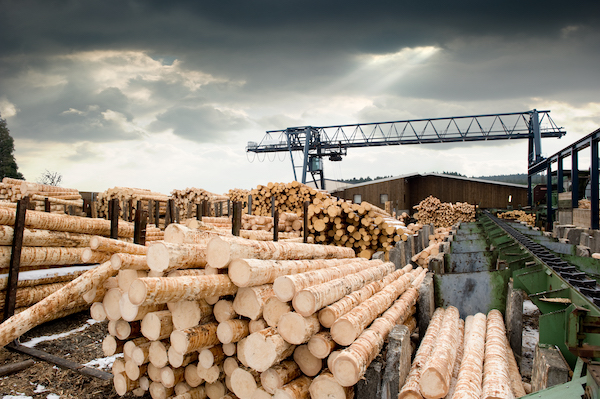The sawmill industry is one of the countries key industries. Lumber is a primary raw material in a wide range of manufacturing & construction.
The growing demand for lumber has compelled the sawmill industry to turn to more efficient wood production techniques. On the other hand, the rising environmental concerns have forced them to keep wood wastage to a minimum and optimize their production processes. This requires the wood contractors to extract and utilize the maximum amount of useful wood from a log and only dump the decayed part.
It is for these reasons that the sawmill industry has started to employ advanced techniques that boost wood optimization and help minimize waste. To assist in this effort, 3D laser scanners that offer in-depth wood analysis and assist in wood profiling are helping to reach optimum wood usage and high-volume wood production with minimal waste generation.
How has laser scanning benefited the sawmill industry?
Laser scanning technology has completely revolutionized the sawmill industry. With the help of computer vision, this method offers a holistic, internal view of the logs, along with helping in measuring and profiling them. The industrial computed tomography (CT) scanning helps develop 3D models of the wooden logs, eliminates the guesswork and gives the wood contractors a clear picture to initiate the subsequent steps.
With the help of laser scanners, the entire process is optimized and made more efficient. These efficient machines also help make better decisions when it comes to cross-cutting and sorting. Common errors, such as over-trimming or under-trimming of wood, are also eradicated.
Industrial CT scanning is also used to analyze a log and identify the splits, cracks, rots, knots, resin pockets, and other imperfections that make the log less valuable. Again, this helps in understanding the log deeply before dealing with it further and cutting it. Furthermore, this allows one to choose the best-suited wood for a specific purpose — as woods come in various dimensions and grades, each fit for a different purpose.
With enhanced precision and accuracy, the yield is maximized, and waste is minimized. The use of laser scanning allows the workmen to extract maximum useful material even from a block of decayed wood. This boosts volume and ensures the timber produced is of high quality. That being the case, it can be safely said that advanced laser scanners are responsible for the higher production of wood —which, in turn, drives greater profits.
These machines reveal the genuine quality of the logs, as many logs that appear healthy from the outside can be rotting from the inside.
How do laser scanners work?
The laser scanners that are being used in the sawmill industry resemble the medical imaging technique of CT scans or computed tomography scans (formerly known as computed axial tomography or CAT scan) used for the internal examination of patients suffering from various diseases. Laser scanners provide a clear view of the inside of logs, allowing one to find defects and classify the logs in the same way that a radiology technologist can get detailed images of the body noninvasively for diagnostic purposes using a medical CT scan.
The logs are laid on these machines, and a beam of laser light is projected on the surface. The camera outfitted in these multi-point laser scanners helps generate multiple data points. These millions of points further facilitate the generation of scans that are fed into the computer. In other words, each piece of log is digitized and converted into a 3D model. The information inferred is crucial as it helps determine cutting patterns for maximum yield and value.
Features of an ideal laser scanner
The quality of laser scanners is directly proportional to the quality of the yield produced. Premium laser scanners — outfitted with high-quality, precision lens — offer a complete and clear image of the wood. This helps quickly identify the flaws of a log, which further impacts the subsequent steps of timber production.
An ideal laser scanner offers complete coverage of the piece of wood being digitized. All four sides of the wood should be adequately scanned in order to expose the flaws and showcase the valuable component available in a piece of wood. Often, many steep wanes get concealed in the blind spots between data points. This is a big problem as it leads to incorrect cutting decisions, thereby, increases the number of wasted, useless logs.
With a top-notch laser scanner equipped with a precision lens, the chances of such mistakes are extremely minimal. This, again, ensures the waste produced is negligible.
Let Universe Kogaku’s lens application engineers supply you with the best lens solution.
Lenses are one of the crucial components of laser scanners; they directly impact the quality of the scan produced — premium lenses deliver accurate results. Therefore, the choice of lens is a critical decision when it comes to laser scanners.
Universe Kogaku’s engineering team that can design and manufacture laser lens assemblies. If you need premium custom lenses for your laser scanners, please call 1-516-624-2444 or email info@universeoptics.com. One of our trained lens application engineers will get back to you as soon as possible.